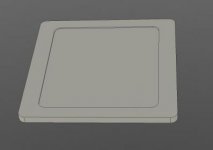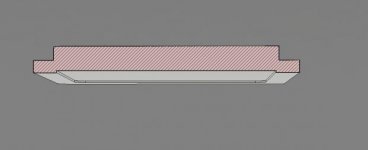I have a HAAS VF4Ss and VF2, both relatively new.
The end mills I've tried have mostly been naked, name brand (Iscar, Kenametal, Sumitomo etc..) I did try a few coated end mills and couldn't see any difference.
In researching I read that copper likes diamond so I picked up a CVD and PCD 1/8" that I will try when I am able to get back on this project.
The copper blank is held in softjaws as it has an upset on the opposite side that makes it real convenient to drop it into a milled slot and the lip is used as reference for the second op which is the final trim to shape and the pocket we're talking about.
The copper will be used for a heat sink and the pocket is the area that touches the part that needs cooling.
The goal is to have the most efficient cooler possible so that means the most surface contact possible.
Milling marks = small valleys left from the cutter = less surface contact area.
I'm open to any suggestions to get it done on the mill
Maybe farming out to a press punch shop?
Up till now all jobs that I've farmed out have not worked out so well so I'm a little reluctant to go that route.
I have to say, the idea of some type of hammer punch sounds good. Get the guys out and see who can hit it the hardest with the side benefit of relieving stress while being productive at the same time.
View attachment 200621View attachment 200622View attachment 200623




